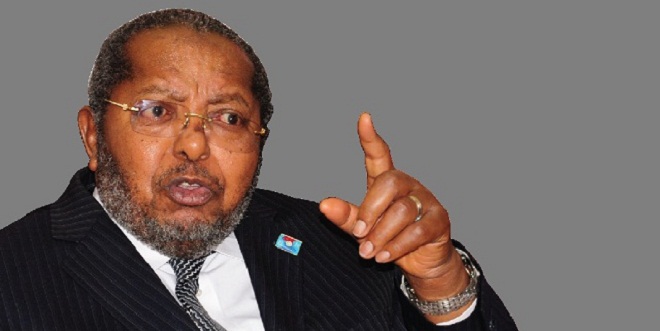
Says private sector credit growth remains subdued driven largely by low demand
Kampala, Uganda | JULIUS BUSINGE | Bank of Uganda’s decision to keep the central bank rate unchanged at 6.5% in the next three months has sent a signal to the market that Covid-19 containment measures are still a challenge to the country’s economic recovery.
On Aug.12, Governor Emmanuel T. Mutebile, said his decision on the CBR was based on the outlook for changes in prices, lending rates and other core indicators of the economy.
“The outlook for inflation is, however, uncertain and is subject to both downside and upside risks…nevertheless, we view these risks as broadly balanced,” he said.
Mutebile said it is against this backdrop that the Bank of Uganda kept the CBR unchanged at 6.5%.
“This decision is consistent with meeting the inflation target of 5% sustainably in the medium term while supporting the economic recovery,” he said.
Mutebile’s monetary policy report for August, however, says that lending rates are on a downward trajectory since February 2021 in line with the easing of monetary policy stance.
The weighted average lending rates declined from 19.6% in May to 17.0% in June this year driven by lending to prime borrowers in the telecom and oil sectors.
In an interview with The Independent, Paul Lakuma, a research fellow at the Makerere University based, Economic Policy Research Centre, said Banks are sitting on tonnes of money which they cannot lend out because they believe COVID-19 could compromise repayment plans for borrowers.
He said, those that are cleared to borrow are being served under the Know Your Customer (KYC) basis and their loan repayment history has always been good even amidst challenges.
The lending rates on shilling denominated loans declined to 18.2% in the quarter to June 2021 from 18.7% in the quarter to March 2021.
Lending Rates on foreign currency denominated loans averaged 6.4% from 5.3% in the same period.
Relatedly, credit to the private sector growth remains subdued quarter-on-quarter driven largely by low demand due to the slow pace of economic recovery.
Total private sector credit grew by 6.8% in the quarter to June compared to 9.8% in the quarter to March 2021.
While the value of loan approvals rose to Shs2.25 trillion during the quarter to June 2021 from Shs2.17 trillion in the quarter to March 2021, the value of loan applications, fell to Shs3.78 trillion from Shs5.01 trillion in the quarter to March 2021, reflecting low demand due largely to the slow pace of economic recovery.
“PSC could grow at a moderate pace in the near-term,” Mutebile said, “in the medium- to long-term, however, as the pandemic is contained and economic recovery takes root, this will boost confidence, which should improve supply and demand for credit,” he added.
Meanwhile, the exchange rate remained relatively stable, depreciating by 0.3% month-on-month in July 2021 compared to an appreciation of 0.3% in June 2021.
However, it appreciated by 4.1% year-on-year compared to 5.3% appreciation year-on -year in June 2021.
Mutebule said, due to the pandemic containment measures, a sector like tourism is unlikely to return to normal levels any time soon – this could somewhat weaken the Uganda shilling.
The composite indicator of economic activity (CIEA), a high frequency proxy of real GDP growth grew by 1.7% in the quarter to June 2021, up from 0.8% in the quarter to March 2021.
GDP growth
The central bank executives said, both business and consumer perceptions over the next three months declined largely driven by uncertainties surrounding the resurgence in COVID-19 infections, low vaccination rollout and lockdown measures in June and July 2021.
“The growth outlook is highly uncertain and is highly conditional on the availability of vaccines, the potential emergence of vaccine-resistant virus strains and a balance between containment measures and economic recovery,” Mutebile said.
He added that economic activity is expected to grow in the range of 3.5-4.0% in FY2021/22; a downward revision relative to the June 2021 projection. This will partly be dependent on inflationary pressures.
According to Uganda Bureau of Statistics data, on a monthly basis, annual headline inflation rose slightly to 2.1% in Jul 2021 from 2.0% in June 2021, while annual core inflation declined to 2.5% from 2.7%.
Going ahead, Mutebile said, inflation could rise gradually through the year due to the temporary effects of the COVID-19 containment measures but is forecast to remain below the 5% target in the near-term, as excess capacity continues to exert downward pressure on activity.
In the medium-term, as demand recovers and the release of pent-up demand, inflation is forecast to rise but stabilize around the 5% target.
Beyond inflation, Mutebile said, outlook is, highly uncertain and is highly conditional on the availability of vaccines, the potential emergence of vaccine-resistant virus strains and a balance between containment measures and economic recovery.
****
 The Independent Uganda: You get the Truth we Pay the Price
The Independent Uganda: You get the Truth we Pay the Price



